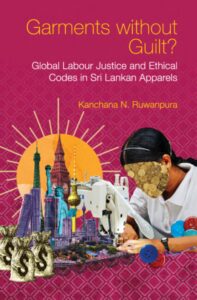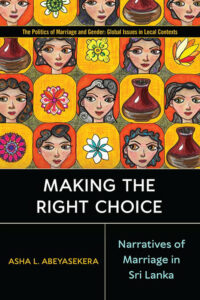 Redding’s book lays out the manner in which regardless of the horrendous anti- Muslim violence permitted and often perpetrated by the Indian secular State court system, the secular State courts in turn need the ‘Islamic non-State’ in both material and ideological ways.
Redding’s book lays out the manner in which regardless of the horrendous anti- Muslim violence permitted and often perpetrated by the Indian secular State court system, the secular State courts in turn need the ‘Islamic non-State’ in both material and ideological ways.
The Islamic non-State that Redding refers to is the Dar- Ul Quaza network that exists in addition to the court system that also adjudicates on the basis of Muslim law. Redding refers to this network as “private Muslim dispute resolution providers” (Redding 2020: 6).
This curiously interdependent relationship between the secular State and the Islamic non-State in the sphere of dispute resolution is framed by Redding as constituted by “absorptive love”, “otherising hate”, and “needful dependency”.
The primary trope of “need” is then described as the Islamic non-State easing the burden of the secular civil and criminal court system by reducing the volume of cases they are compelled to hear, and by providing access to divorce for Muslim women when the secular court system has been notoriously reluctant to grant divorces to anyone.
Redding argues that the Dar Ul Quaza system has greater popular legitimacy due to its informality and is preferred by Muslims over the “difficulties” of the more formal State court processes.
Redding’s analysis also reminds us about the importance of the trope of “hate”. The petition that was brought against the Dar Ul Quaza network by the lawyer Madan in 2005 argued that the Islamic courts undermine “liberal constitutional values such as secularism and the rule of law”. The Indian Supreme Court’s decision regarding the case both endorsed sentiments of “liberal hate” that forms the basis of the case, and recognised the role played by such courts in legitimate dispute resolution. The conjoined prevalence of “absorptive love” of the secular State towards Muslims as well as the “otherising hate” is constitutive according to Redding, of its “needful dependency” on the Islamic non-State.
In its discussion of the history and contemporary relevance of the Dar Ul Quaza network, Redding’s book sparked many reflections regarding the Sri Lankan context which shares some superficial similarities with India. However, the vastly different relationship between the groups, and the dissimilar histories of the respective court systems, leave little room for direct comparisons.
Post-war Sri Lanka experienced a surge of anti-Muslim hate. While unlike India where the legacy of Mughal rule, the history of partition, and relations with Pakistan impact Hindu-Muslim relations, the othering of Muslims in Sri Lanka with the kind of virulence experienced in the last 10 years is relatively new in its post-colonial history. The nation State form’s requisite intimate “other” was for a long time, the Tamil. At the conclusion of the war in 2009 however, a variety of groups focused on the sustained othering of Muslims against whom there have already been several incidents of mob violence.
Today, anti-Muslim sentiment is widespread, and incitement of Muslim hate is a go-to strategy at election and other times, including during the height of the COVID pandemic. The bombings of churches and tourist hotels by local ISIS sympathisers on Easter Sunday 2019, transformed the rhetoric of the anti-Muslim movement into a principle of policy. One of the elements that has been utilised for the propagation of anti-Muslim sentiment has been the Muslim Marriage and Divorce Act (MMDA).
The MMDA, which has not been substantively reformed since its enactment in 1951, has egregious provisions which discriminate against women: only men can be quazis; there is no specified age of marriage; there is no space in the marriage registration form for the bride’s signature, and polygamy is permitted without reservations. At least two generations of Muslim feminists have struggled to have the State reform the MMDA to no avail. Opposition from sections of the Muslim male leadership and the indifference of the state stymied reform in the early years.
Today, the MMDA is part of a national conversation about overturning “special” privileges that Muslims have in the country. The problem of early marriage – widespread among vulnerable populations across the country – is articulated as a Muslim issue. The conversation is about abolishing all but the most minimal elements of the MMDA. For instance, the Quazi court system, in dire need of reform, is to function but will be stripped of its Muslim name; and polygamy is to be banned given that it is a privilege not accorded to Sri Lankan men who are not Muslim.
Today too, Muslim women activists are locking horns with the male Muslim religious establishment committed to blocking reform. Under the current regime, however, activism around the MMDA cannot be indifferent to attempts by the anti-Muslim movement to instrumentalise the issue for the marginalisation of Muslims. This is where much of the similarity with the Indian context must be located and also where any claim to similarity must end.
For Sri Lanka first and foremost, the term secularism has little or no meaning other than as a somewhat distant normative standard for State practice. Successive governments have successfully mobilised a nativistic Sinhala Buddhist nationalism that “others” all minorities and repels “western influences”.
The recognition of “foremost place” for Buddhism in the country’s first autochthonous Republican Constitution of 1972 successfully laid to rest any claim to a constitutional commitment to secularism. Therefore, the normative notion that “secularism” must inform governance practices of a modern State is not a position that is frequently assumed by activists and is not a slogan that has much purchase. Today the regime actively cultivates its base using Sinhala Buddhist supremacist language and signage, while conversations about secularism have become largely irrelevant.
There is also no formal recognition or acceptance of non-State dispute resolution mechanisms run by religious groups. The precursor to the MMDA of 1951 was drafted after 1925 and established the position of Quazi within the Act precisely as part of the colonial State’s refusal to accommodate such mechanisms. Currently such mechanisms exist among the country’s Muslim population at an informal level and are run by particular mosque committees in villages and are separate from the Quazi courts.
The few documented cases of mosques attempting such dispute resolution have been critiqued for their policing of sexual transgressions by framing them as infractions against community standards. In one case in the eastern town of Kattankudi, the Human Rights Commission of Sri Lanka attempted to intervene in a manner that “respected” Muslims’ cultural sensibilities. However, this “respect” for cultural sensibilities by an institution of the State was ad hoc and not sustained and resulted mainly in validating the basis upon which the male mosque committee members acted. The work of these institutions were critiqued as “extra-legal” and anti-women and as indicative of the State’s validation of some of the most egregious acts of reformist groups (Haniffa 2015).
The Sri Lankan State has no pretensions whatsoever to being liberal with regards to Sri Lankan women. The overwhelmingly male Parliament (less than 5% female representation since independence) has rarely demonstrated that it has the interests of Sri Lanka’s women in mind when drafting legislation. The criminalisation of marital rape, and the instituting of an Act on domestic violence, were done after significant struggle. And as said above, the MMDA has defied reform despite several attempts at organised lobbying. Any regard that legislators have for women is framed only in the most conservative tropes of motherhood and caregiving. The Indian State’s shifting of cases of violence against women to the criminal court system in the interest of efficiency is a powerful indication of the recognition of women’s rights by the secular Indian State – after much work by activists – and speaks to the work still to be done in Sri Lanka.
The discussion of the legitimacy problem of the secular courts in India that is shored up by the Dar Ul Quaza system was, for me, the most interesting chapter in the book and served as a necessary reminder of how legitimacy can be conceptualised in the context of administering justice.
In Sri Lanka the longstanding popular appeal of a Quazi court system that is only tenuously connected to the State system but is considered legitimate on the basis of its compliance with the Shariat has stumped feminist activists. The system is riven with corruption and rarely supports women’s requirements, and few if any faskh divorces (initiated by the wife) are entertained. However, the community appeal of such a system and the manner in which despite its many failings it provides an alternative mode of dispute resolution and is free of some of the constraints of more formal processes must be appreciated. For instance, the cost-effective nature of the Dar Ul Quaza process for Muslim women seeking divorce is mentioned in the case that Redding uses, and the fact that the current Quazi system permits litigants to represent themselves without recourse to a lawyer is something that local activists in Sri Lanka are also interested in maintaining.
While the book presents the existence and acceptance of the Islamic non-State in the context of violent anti-Muslim sentiment and action, as a non-legal specialist it was difficult to gauge what this meant for the future of Muslims in India. Other writing speaks to the steady deterioration of the status of Muslims through the ghettoisation of Muslim communities, the lack of recognition of the need for reservations, and the increasing violence and the introduction of new laws through which to further marginalise Muslims.
The presentation of the Islamic non-State as necessary for the existence of the secular State is suggestive of many possible readings regarding the future. If more was said about what this “secular need” might ultimately mean for Muslims in India, the specificity of this particular historical moment in the politics of the Indian secular State may have been clearer. The question as to whether the idea of the secular State itself was historically contingent seems to haunt the book and a little more on that would have been useful.
The book makes a very interesting argument about the Indian secular State and the Islamic non-State that sparked useful reflections regarding the Sri Lankan context. It should be read by any scholar interested in the law in contemporary India, non-State dispute resolution mechanisms, as well as the ongoing conversation regarding Indian secularism.
Farzana Haniffa is Professor and Head of the Department of Sociology at the University of Colombo
Note
An earlier version of this review appeared in Law and other things: A blog about India’s laws and legal system, its courts and its constitution. https://lawandotherthings.com/2020/10/jeffrey-reddings-a-secular-need-a-review-by-prof-farzana-haniffa/
Reference
Haniffa, Farzana. (2016). “Sex and Violence in the Eastern Province: A Study in Muslim Masculinity”. In Kumari Jayawardena and Kishali-Pinto Jayawardena (Eds.). The Search for Justice: The Sri Lanka Papers (193-236). New Delhi: Zubaan.




